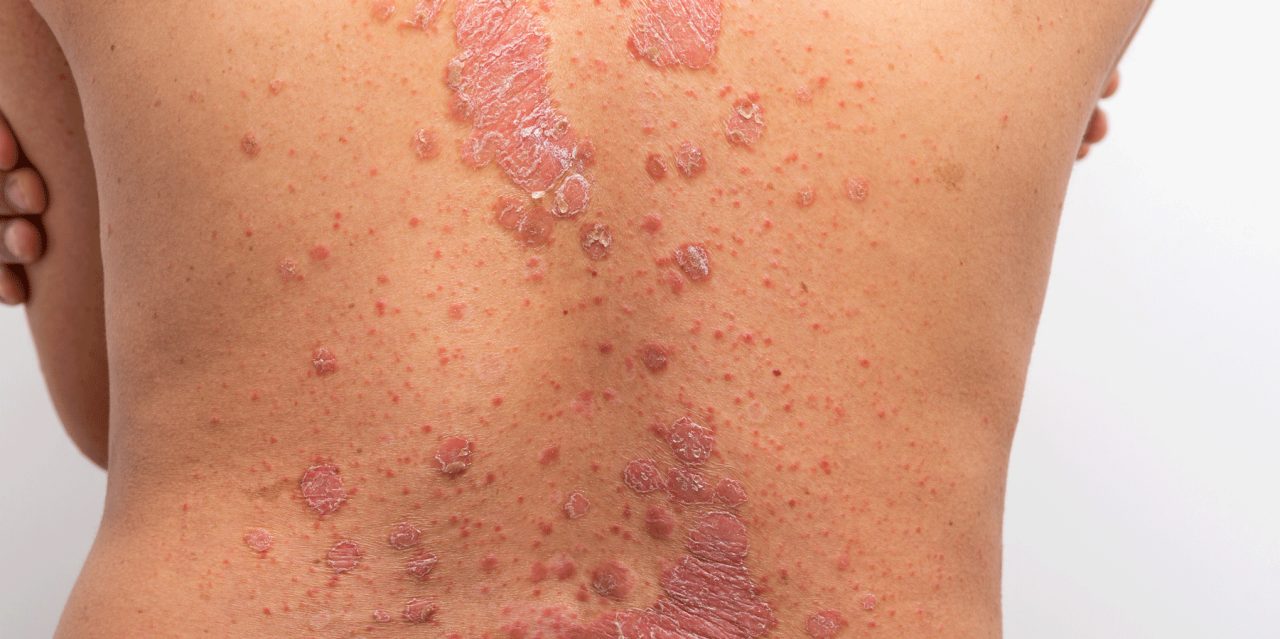What Is Eczema?

Eczema can cause problems in your skin's protective barrier. Identify your allergic triggers and avoid them to prevent flare-ups of dry, itchy, and scaly skin.
Eczema is a collection of inflammatory conditions caused by a problem with your skin’s protective barrier. More than 31 million Americans have eczema, which involves flare-ups of dry, itchy, scaly skin.
Although eczema often starts during childhood, it doesn’t appear in some people until middle age.
YOU MIGHT ALSO LIKE: Our Spring Allergies section
Types of eczema
- Atopic dermatitis is inflamed, itchy, dry skin.
- Contact dermatitis is caused by a reaction with an irritant like metal or cleaning chemicals.
- Dyshidrotic eczema produces small blisters on your skin.
- Neurodermatitis creates small itchy patches of skin.
- Nummular eczema causes small round itchy sores to form all over your body.
- Seborrheic dermatitis affects your scalp.
- Stasis dermatitis causes skin color changes in your legs from poor blood flow.
Who gets eczema?
Experts believe that eczema stems from a combination of genetic changes and environmental factors. Genes set up the disease, weakening your skin barrier or making your immune system overreact to normally harmless substances.
You may be more likely to get eczema if you:
- Have a history of allergies, hay fever, or asthma
- Have parents or siblings with eczema or allergies
- Have extremely dry skin
- Live in a cold, damp climate
- Are under stress
Once you’re susceptible to eczema, triggers can set off your symptoms:
- Allergens such as pollen, dust mites, mold, or pet dander
- Exposure to cold, dry, or hot weather
- Fabrics like wool and polyester
- Food allergens such as wheat, dairy, nuts, eggs, or soy
- Irritants like perfume, soap, household cleaners, and laundry detergent
- Nickel and other metals
What are the symptoms of eczema?
Eczema can look different on each person, depending on the type they have and how their skin reacts. Some typical symptoms are:
- Cracked or crusty skin that may bleed
- Dry skin
- Itchiness
- Redness
- Rough or scaly skin patches
- Swelling
The location of eczema varies by age. Infants and young children often have patches on their cheeks, elbows, and knees. In adults, eczema appears on the arms, the back of the knees, the hands, and the feet.
How is eczema diagnosed?
Red and itchy skin patches aren’t unique to eczema. Psoriasis causes similar symptoms, which underscores the need for an accurate diagnosis.
You might make an appointment with your primary care doctor. Based on your symptoms, the doctor can refer you to a dermatologist for a skin exam and an allergist for tests to identify your triggers. The process of diagnosing eczema also can involve blood tests to look for other possible causes of your symptoms.
What are the treatments for eczema?
Eczema medications come in topical, oral, and injected forms. Some treatments are available over the counter. Others require a prescription from your doctor.
- Antihistamines like diphenhydramine (found in Benadryl and Sudafed) and fexofenadine (in Allegra) relieve the itch of eczema and calm inflammation in your skin.
- Corticosteroid creams, lotions, and gels reduce inflammation and relieve itching.
- Medicated shampoos contain ingredients like ketoconazole and coal tar that clear eczema scales from your scalp.
- Other topical medications reduce your body’s immune response in different ways to prevent eczema symptoms. These medicines include tacrolimus, pimecrolimus, ruxolitinib, and crisaborole.
- Immunosuppressant pills suppress the overactive immune system to control eczema symptoms. Examples include:
- Drugs typically used to prevent organ transplant rejection, such as azathioprine and cyclosporine
- JAK inhibitors like abrocitinib and upadacitinib
- Corticosteroids
- Biologics are a targeted therapy for eczema. They block specific parts of the immune system that cause inflammation. Dupilumab is approved for adults and children ages 6 and older whose moderate-to-severe atopic dermatitis hasn’t responded to other treatments.
- Phototherapy exposes your body to different wavelengths of ultraviolet (UV) light to clear your skin.
What you can do
Identify your triggers with the help of an allergist and try to avoid them.
Apply an ointment like petroleum jelly and moisturizer a few times a day to keep your skin hydrated. When you bathe, use a gentle fragrance-free cleanser and warm (not hot) water. Pat dry afterward, and apply a dermatologist-recommended cream to hold moisture into your skin.
Updated:
October 04, 2023
Reviewed By:
Janet O'Dell, RN